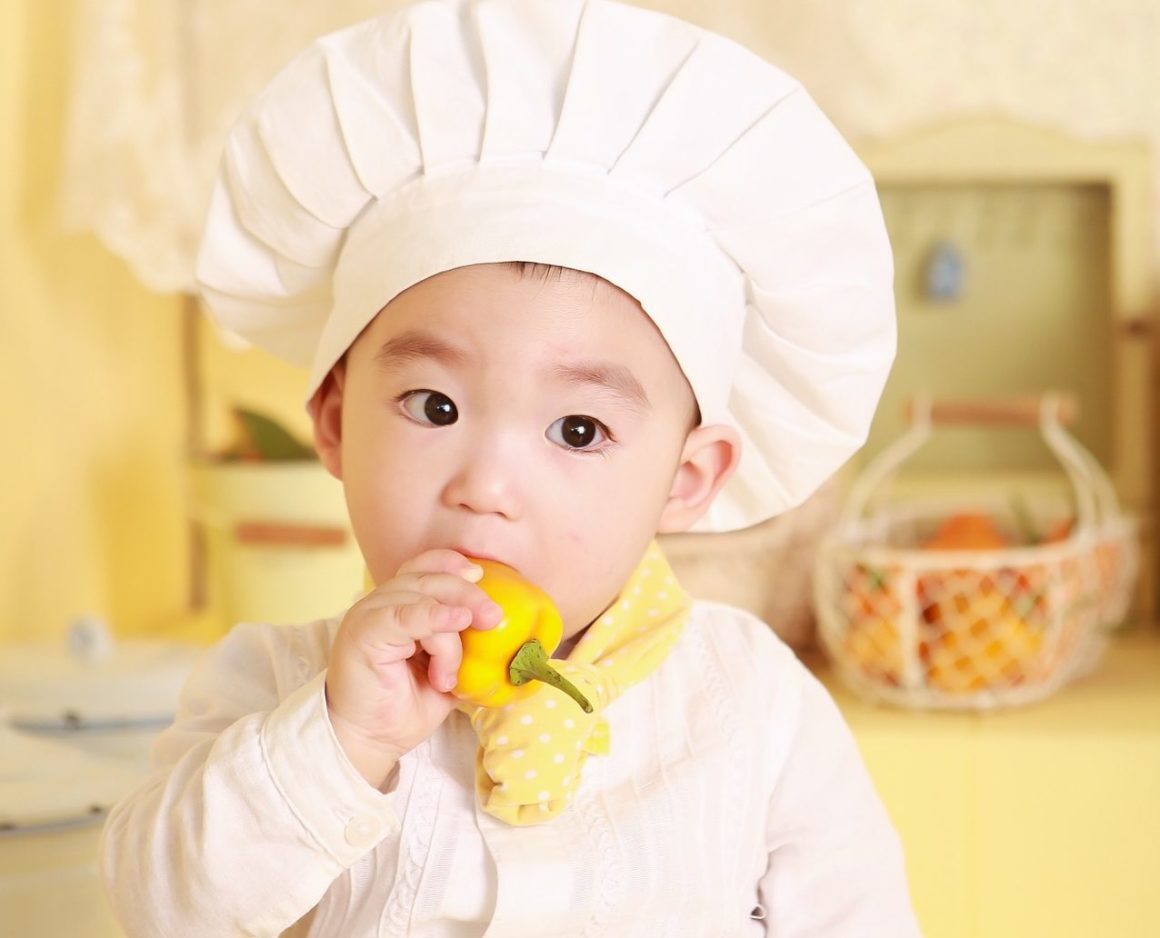
Get Your Toddler Talking: How to Let Your Toddler Help in the Kitchen
Cooking with your child is a great opportunity for all types of learning – especially language development. Plus, it is a great bonding experience that could lay the foundation for cooking together as your child grows!
Extra bonus of cooking with your kids: They are more likely to try new foods when they feel a part of the cooking process, have handled the food, and have a sense of pride about what they helped to make! Case in point – Sylvie eating a green bean (She usually turns her nose up at green beans!)
This post contains affiliate links, which means we may receive a commission if you click a link and purchase something that we have recommended.
Since I usually do some sort of food prep every day, I’ve really been enjoying that Sylvie is old enough to start to “help” me in the kitchen on occasion (as long as it doesn’t involve the stove top).
At 19 months I thought she might be too young to be interested, but she loves it! I always tell her that she is a big helper, which she loves. At this age, she wants to imitate everything I do anyway, so it seems like the perfect time to introduce cooking!
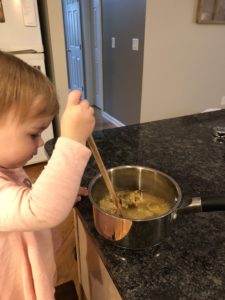
During cooking, Sylvie usually stands on a chair right next to me. Lots of people use a Learning Tower – these are popular with the Montessori crowd because they foster independence – and are obviously safer than standing on a chair.

Sylvie loves to watch me do some of the cooking prep as long as she gets a chance to do some of the basic actions like:
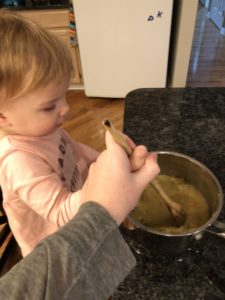
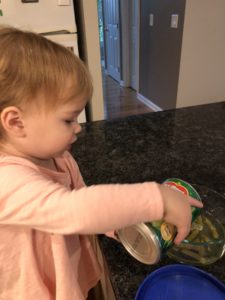
• Mixing (with some help)
• Handing me items I need, especially when I’m rinsing a bunch of potatoes!
• Pouring from the measuring cup or can into a bowl
• Putting things in the bowl after I chop them (this is really helpful!)
• Putting on lids
• Putting trash in the trashcan
Here are some tips on using this type of activity specifically for language development:
For a child at any stage of language development:
• Narrate what you are doing in short sentences and phrases like “Pour in,” “Cut banana,” or “Mommy is mixing.” This is called Self-Talk – click here to learn more about using self-talk.
Are you looking for a fun, app to help your child with speech and language skills? I like Speech Blubs – you can learn more here and get a free trial. (I do recommend you work on the exercises in the app with your child – it is a great guide!)
For Pre-Talkers:
o If your child is not talking yet, have her ask for a turn by patting her chest and then you can model what she will eventually say: “My turn.”
o Work on following simple, 1-2 word directions like “Put in,” “Top on,” “Give me ___” and “All done.”
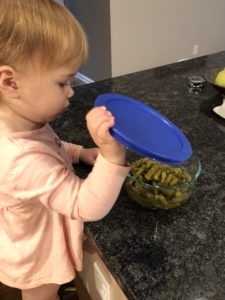
For Beginning Talkers:
o If your child is beginning to talk, repeat the word he said and then expand by one-two words. So if he says, “Banana” then you say, “Yes! Peel the banana.”
To Work on Following Directions:
o You can also work on following directions and identifying items (in speech therapy we call this receptive language). This can be simple directions for toddlers “Give me the apple” paired with a gesture or even physically helping them follow the direction the first few times.
o For older kids, you can have them follow kid-friendly recipes with your help.
Some easy cooking activities that we like in our house:
• Roasted potatoes
• Fruit salad
• Muffins (in our house it’s usually from the box – ha ha!)
Pin It for Later!
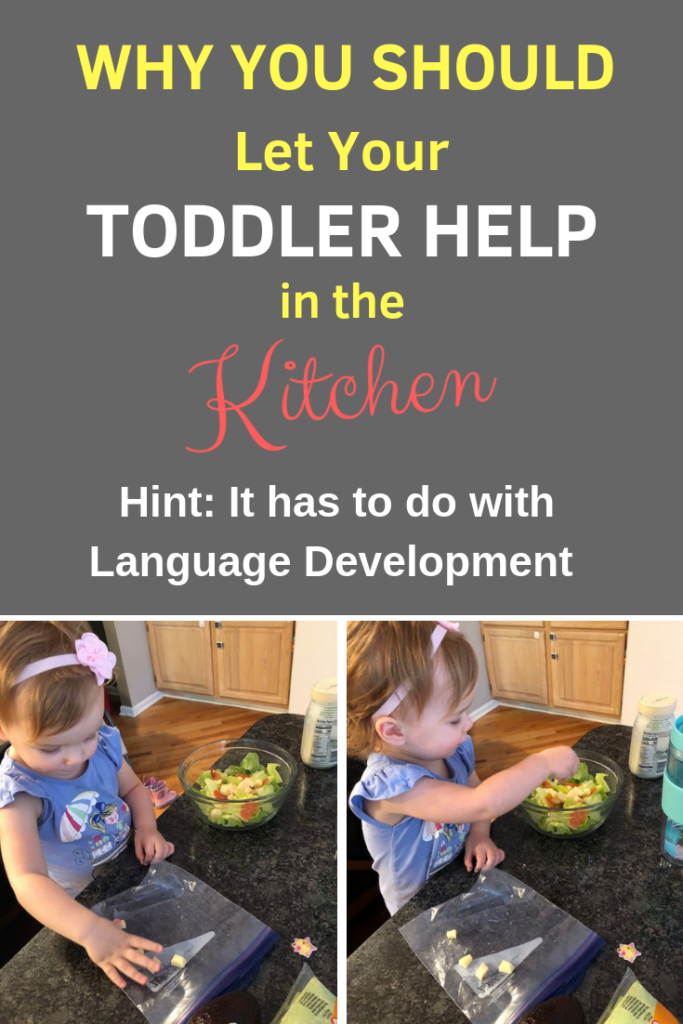



2 Comments
Babul Hossain
My children also help me to cook. Just loved your article.
Zoe Campos
The part where you mentioned that your toddler wants to imitate everything that you do remind me of my daughter. I have noticed that she often wants to be a part of everything I do and sometimes I feel guilty for not paying enough attention to her because I’m too busy during the day. Maybe I can enroll her in a nearby child care center while I’m occupied with other things so she can enjoy her time interacting with kids around her age.